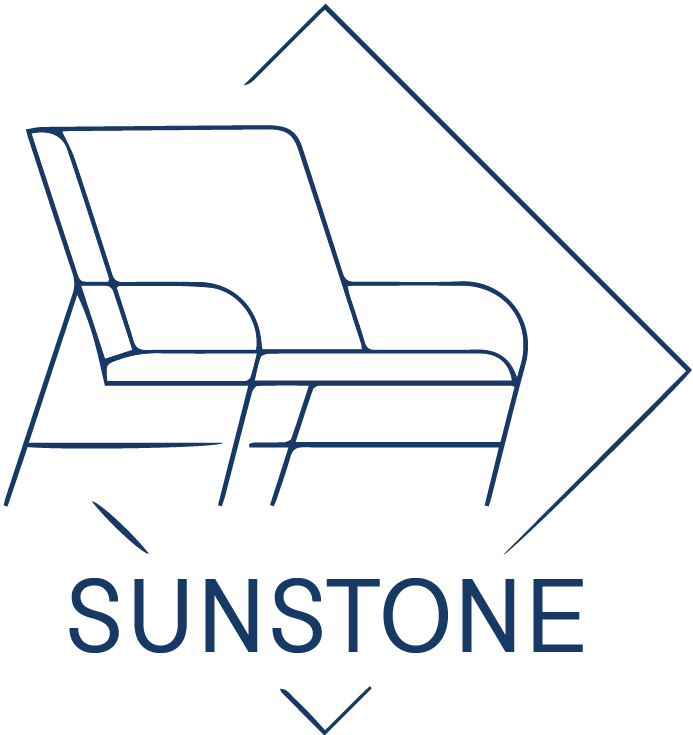How To Get Rust Off Outdoor Chairs
Outdoor metal chairs add strength and elegance to patios, decks, and gardens, but when exposed to moisture and oxygen, rust can develop over time. Rust not only affects the appearance of your furniture but can also weaken the structure if not treated promptly. Fortunately, removing rust from Outdoor Chairs is simple with the right cleaning methods and protective maintenance.
Table of Contents
- Understanding How Rust Forms
- Step 1: Prepare the Surface
- Step 2: Remove Loose Rust
- Step 3: Apply a Rust Removal Solution
- Step 4: Sand and Smooth the Surface
- Step 5: Repaint or Seal the Metal
- Step 6: Regular Maintenance to Prevent Rust
- Material-Specific Rust Care Tips
- Recommended outdoor furniture
- Conclusion
Understanding How Rust Forms
Rust forms when iron or steel reacts with oxygen and moisture, producing iron oxide — a reddish-brown layer that spreads if left untreated. Even rust-resistant materials like powder-coated steel or wrought iron can corrode once their protective coating is scratched or worn down. Regular cleaning and preventive treatment are essential to maintain the longevity and beauty of metal outdoor chairs.
Step 1: Prepare the Surface
Before treating rust, clean the chair thoroughly. Use warm water mixed with mild dish soap and a sponge to remove dirt, grease, and loose debris. This ensures that cleaning agents can work directly on the rust without interference. Rinse the surface well and dry it completely with a clean cloth. For chairs with removable Cushions, take them off to prevent water absorption.
Step 2: Remove Loose Rust
Use a wire brush or medium-grit sandpaper to scrub away loose rust and flaking paint. Work gently but thoroughly to expose clean metal beneath the corroded layer. For curved or detailed areas, a small steel-bristle brush or rotary tool with a wire attachment can help reach tight spaces. Always wear gloves and protective eyewear to avoid irritation from rust particles. Once you’ve removed the majority of the rust, wipe the surface with a damp cloth to clear away residue.
Step 3: Apply a Rust Removal Solution
Several effective solutions can dissolve remaining rust stains depending on the severity and type of metal:
| Rust Removal Method | Ingredients | Application Time | Best For | Notes |
|---|---|---|---|---|
| White Vinegar | Undiluted | 15–30 minutes | Light Rust | Natural and safe for steel |
| Baking Soda Paste | 3 tbsp + water | 30–60 minutes | Mild Rust | Gently abrasive, non-toxic |
| Lemon Juice + Salt | 1:1 mixture | 2 hours | Decorative Iron | Mild but slow-acting |
| Commercial Rust Remover | As directed | 10–20 minutes | Heavy Rust | Stronger for deep corrosion |
For mild rust, soak a cloth in white vinegar and press it onto the rusty area. Let it sit for 15–30 minutes, then scrub with a soft brush. Rinse and dry completely. For heavier rust, use a store-bought rust remover designed for metal furniture — just follow the instructions on the product label carefully.
Step 4: Sand and Smooth the Surface
After the rust is dissolved, sand the treated areas again using fine-grit sandpaper (around 400–600 grit) to smooth the metal and remove any lingering rough spots. This step helps prepare the surface for repainting or sealing. Be sure to wipe away all dust particles before proceeding.
Step 5: Repaint or Seal the Metal
Once the surface is clean and smooth, protect it from future corrosion. Apply a metal primer specifically formulated for outdoor use. After the primer dries, paint the chair with weather-resistant enamel or powder-coated metal paint. These coatings form a durable barrier against moisture and UV exposure. For a matte finish, you can also apply a clear polyurethane or rust-inhibitor sealant instead of paint.
Step 6: Regular Maintenance to Prevent Rust
To keep outdoor chairs rust-free, follow a consistent maintenance routine:
Wipe metal surfaces weekly with a damp cloth to remove dirt and pollutants.
Avoid placing chairs directly on grass or soil, where moisture accumulates.
Cover or store them indoors during heavy rain or winter months.
Reapply protective coatings once every 12–18 months for long-lasting protection.
Material-Specific Rust Care Tips
Aluminum Chairs: Technically don’t rust but may oxidize; clean oxidation with vinegar and polish afterward.
Wrought Iron Chairs: Require regular waxing or sealing to maintain their finish.
Steel Chairs: Should be kept painted or powder-coated; immediately repair any chips in the surface coating.
Recommended outdoor furniture
For those seeking outdoor furniture that resists corrosion naturally, Sunstone Outdoor offers a range of premium aluminum and stainless-steel chairs with UV-stabilized powder coatings. Our products are engineered for durability, combining modern design with superior rust resistance. Whether by the poolside or in open gardens, Sunstone Outdoor furniture retains its sleek finish and strength even under harsh weather conditions.
Conclusion
Removing rust from outdoor chairs doesn’t require harsh chemicals or professional help — just patience, the right materials, and consistent care. Start by cleaning and scrubbing off loose rust, then use mild acids or commercial removers for deeper stains. Once restored, protect your chairs with paint or sealant to prevent future corrosion. For a long-term solution, investing in high-quality, rust-resistant furniture from Sunstone Outdoor ensures lasting performance and timeless style in every outdoor space.
Previous: How To Recover Outdoor Chairs

